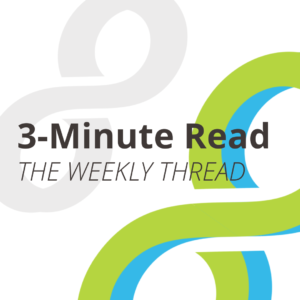Preparing Proposals: Lessons Learned from the Researcher Guidebook
May 7, 2024 —The path to successful cross-sector research collaborations often begins with a well-prepared proposal that not only outlines the scope of the project but also resonates with the funder’s needs and expectations. This is true when the project is a university-industry collaboration, but it is particularly important for joint proposals prepared for a government funder. From the standard elements of a proposal to contemporary considerations such as research security and data sharing needs and each partner’s unique goals, submitting a solid proposal can lay the groundwork for impactful research outcomes.
—The path to successful cross-sector research collaborations often begins with a well-prepared proposal that not only outlines the scope of the project but also resonates with the funder’s needs and expectations. This is true when the project is a university-industry collaboration, but it is particularly important for joint proposals prepared for a government funder. From the standard elements of a proposal to contemporary considerations such as research security and data sharing needs and each partner’s unique goals, submitting a solid proposal can lay the groundwork for impactful research outcomes.
Parts of a proposal
Many proposals have the same basic structure, which outlines facets of the proposed project, such as who will lead the specific project components, submission deadlines and milestones, and communication expectations between the parties. Depending on the degree of collaboration and the type of funder, planning ahead for additional documentation requirements may need to be incorporated into the proposal process. Typically, the most important part of a proposal is the statement of work (SOW), which details the tasks that will be completed under the project. (See the UIDP Contract Accord 1, Statement of Work, for a detailed overview.)
Developing a proposal depends heavily on the type of funding sought. A university researcher may respond to a request from an industry funding source. Partnering university and industry organizations may submit proposals in response to a third-party funding solicitation coming from a government agency or nonprofit. In these cases, understanding the funder’s goals is key to creating an attractive proposal so it aligns with the funder’s priorities and goals. The proposal should encompass all the necessary information requested in the solicitation or request for proposal. Federal agency solicitations may be longer and require more detailed paperwork and specific submission package formats. Even if an industry request for proposals doesn’t require all of the forms that are common in government solicitations, it’s critical to provide all requested items—even if it’s only a cover letter and a summary of the project. When an institution already has a relationship with a company and understands its priorities, researchers may submit an unsolicited or investigator-initiated proposal.
Companies and federal agencies also handle SOWs and deliverables differently. Companies may be subject to quickly changing timelines, priorities, and research goals, which means that the SOW should be well-defined and updated to ensure the project continues to meet the company’s needs. The deliverables usually meet a well-defined research need or specific problem. In contrast, government agency solicitations can be broader and allow more flexibility in the definition of deliverables.
For university-industry collaborative proposals targeting third-party funding, like the U.S. National Science Foundation Regional Innovation Engines or the EU Innovation Valleys, everyone must have a clear understanding of the project’s goals, deliverables, and each of the partners’ roles in meeting the project requirements. Large-scale collaborative projects demand regular, intentional communication between partners for a successful proposal to take shape.
Cross-sector perspectives
For university researchers, aligning proposals with funders’ needs and timing is crucial. Be clear and realistic about deliverables, schedules, and budgets. Companies may have little flexibility and are often restricted by firm timelines and budgets. Open and candid communication is vital to ensuring that all parties remain informed and expectations are clearly stated. Successful partnerships come when researchers under-promise and over-deliver; these are the projects that lay the groundwork for subsequent funding and a lasting relationship with the industry sponsor.
For industry researchers working with academia on proposals for government funding, establishing a communication plan, clear roles, and deadlines will help keep the development process on track. Communication plans can be beneficial for any type of proposal development process and can include a kick-off session to establish basic expectations, regular progress meetings, a formal update meeting, periodic reports for technical management, and a final meeting to close out the project. When soliciting proposals from academia, it’s important for companies to define roles and expectations to ensure that institutional responses are aligned with company objectives.
Why it matters
Developing proposals, whether jointly for a third party or individually for a potential partner, is an important aspect of university-industry research collaborations. Managing and setting expectations, establishing communication guidelines, and understanding the key parts of a proposal are integral to crafting a document that will succeed in securing funding and setting the foundation for a potential partnership to flourish.
We want to hear from you. How does your organization approach the proposal development process? Let us know on our LinkedIn profile.
The 3-Minute Read is a UIDP member information piece and does not represent the opinions of our members or representatives. We welcome your comments on our LinkedIn profile.
This 3-Minute Read is part of a series based on the Researcher Guidebook, a public resource published by UIDP. Our members have access to a sequential learning path and Quick Guide developed to help researchers tap into our collective knowledge and clearly understand their pivotal role in cross-sector research partnerships.


